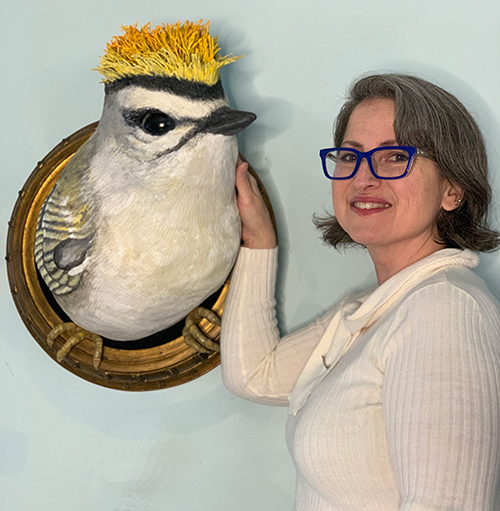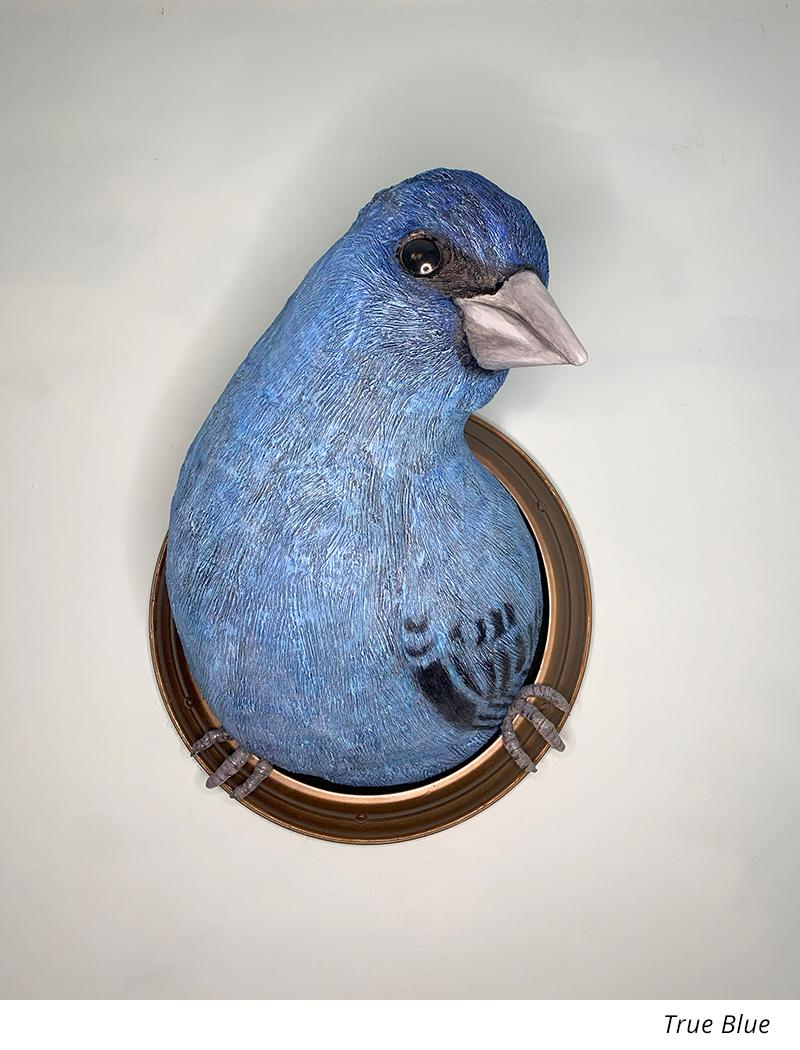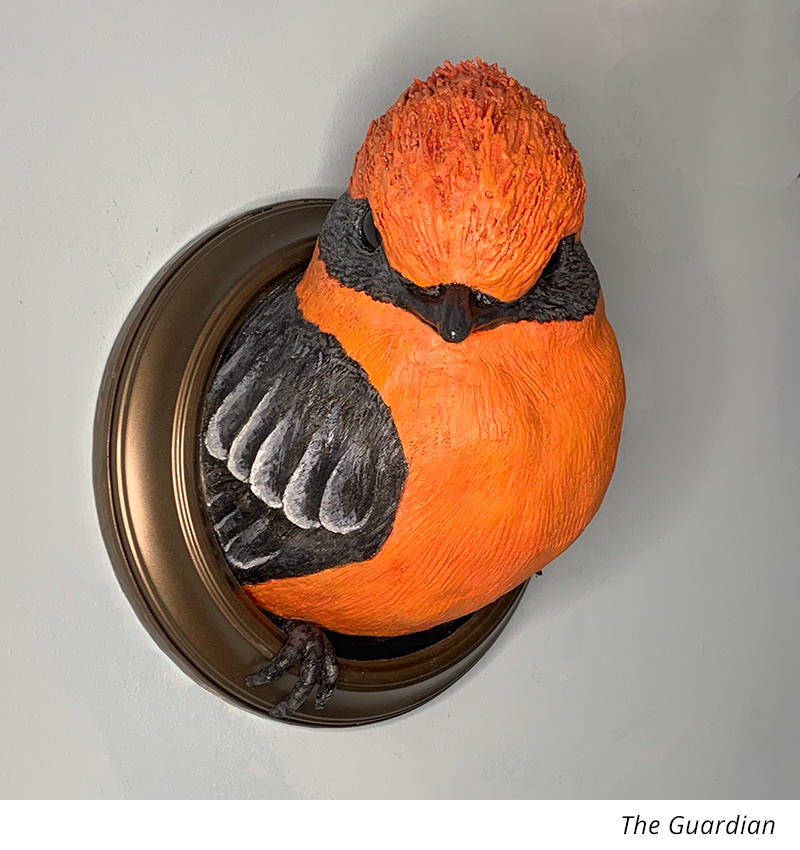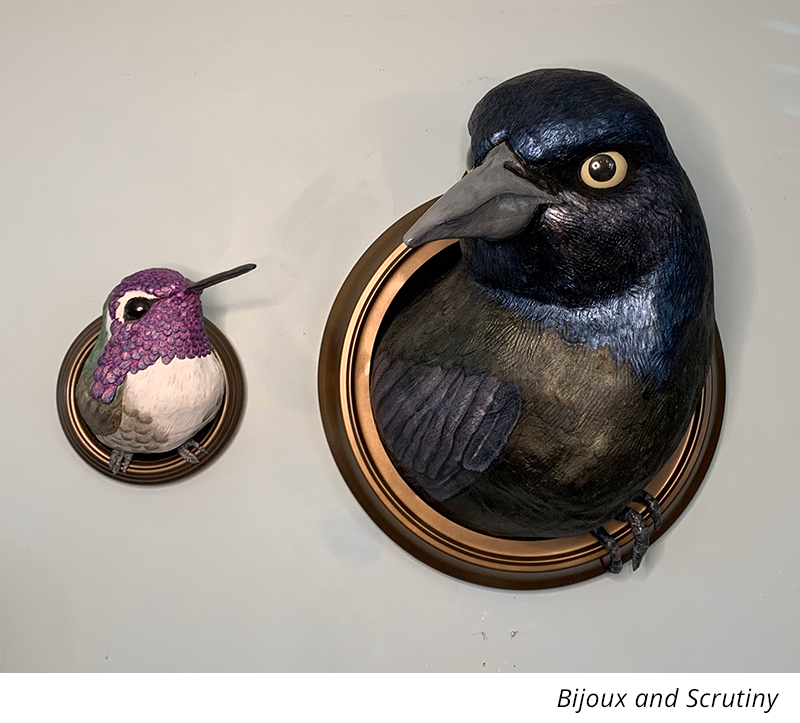
Tell a little bit about how you first got into creating art.
My first love was fabric, and there was a time that I thought that fashion design would be my future. Though I still sew on occasion when a special reason arises, working with textiles has gone from being my focus to being one of many skills in my tool belt. Over the years, I have made art with clay, paper, wood, yarn, every kind of paint and a wide assortment of “found” objects. My diverse art background has made for a very flexible approach to choosing techniques and materials for my projects.
What artists or movements have had an impact on you?
I have for many years been a great admirer of Remedios Varo. Her paintings are a window into a world that is uniquely hers, drawing upon her own blend of influences, skills and interests. I also love many artists of the Pop Surrealism world, and I have a fondness for anyone who makes art from “non-traditional” materials.

It’s those little things we see everyday that so many people overlook that interest me the most
What is your source of inspiration?
I often find inspiration in everyday objects that suddenly catch my eye for one reason or another. When something sparks my imagination, I just can’t forget about it until I make the thing a reality. It’s those little things we see everyday that so many people overlook that interest me the most.
What themes does your work involve?
My work explores the relationship between the art and the viewer, and what happens when you tweak that relationship by changing an element like the scale, materials or placement. Changing up the rules lets people see things in a new way.

I like to challenge the “usual” way of making art
What is important to you about the visual experiences you create?
I like to challenge the “usual” way of making art. Art does not have to be flat rectangles. It does not have to be made using only official “art supplies.” It does not have to fit into what is expected. Artists should feel free to use whatever techniques, materials and forms that are best suited to their skills and the realization of their vision.

Do you work from memory, life, photographs, or from other resources? Describe your creative process.
My sculptures are a mix of several different techniques and materials - some of which are a bit…unusual. When starting a new piece, I first search through photographs of birds to find a particular species that catches my imagination. From there, I seek out other photographs of that species to make sure I understand their unique shapes and markings from every angle. Once I understand what makes that bird that bird, the next step is to choose a frame from my stockpile of rings that I have salvaged from thrifted light fixtures and insert a plywood backing. The frame chosen determines the final size the bird will be, and from that point I can make two life-size sketches – one from the front, and one in profile. Using the sketches as a starting point, I can create the internal structure of the sculpture using pink foam insulation and a few pieces of wood. That structure is then wrapped in plaster gauze with crumpled plastic bag filler as needed until the final shape is achieved. At this point, it’s time to add the eyes, which are generally made using black plastic spoons from the local grocery store salad bar, or in the case of a species with lighter colored eyes, half of a plastic Christmas ornament. Once the eyes are set, I can cover the feathered area of the bird in spackle, which I then texturize using a wire cat brush to “rake” the surface, creating the look of feathers. The feet begin as separate pieces of coat hanger that are bent into shape and covered with plaster gauze and spackle and then inserted between the bird and the frame, creating the illusion that they are perched there, getting their bearings before flying away. Once the sculpture is complete and dry, the entire bird is painted using acrylic paint.
What is your favorite art accident? Did it change your perspective?
The series I’m working on now began by chance. One day, I happened to look up at a large round mirror in my living room and for some reason, I saw it differently. It had been on my wall for years, but suddenly it reminded me of the opening to a birdhouse, and I imagined what it would be like if an enormous bird were perched inside of it.
I could not shake the feeling of wonder and awe at the thought of a gigantic wild creature appearing inside my house. It was a little unsettling, and proved to be unforgettable. I wasn’t looking for a project, but I had to make it a reality.
Do you have any artistic goals for the future that you would like to share?
Someday, I would love to see one of my birds perched on the side of a tall building, staring out towards the horizon. What a sight that would be.
